Traveling by boat from Volos to the Sporades islands, between the southern Pelion and the opposite west coast of Skiathos, we cross a sea strait, where nothing predisposes us to a danger. However, as simple as it seems, just a safe passage, wide only 2.5 miles, it is one of the most difficult passages in the Aegean, something known since antiquity, as sailors have been watching it ever since.
It is one of the ‘evils of the sea’, an area with reefs and shallows, which make navigation extremely dangerous. We must pay special attention to the ‘Lefteris’ reef, in the middle of the sea. The reef is about 180 meters long and about 80 meters wide. It creates really shallow waters, which do not exceed 1-2 meters in depth. From the side of Skiathos too there are the shallows of “Elena”, where the passage iis mpossible for large ships. And here the depth does not exceed 2 meters. Many ships either fell on Lefteris reef or sat in the shallows of ‘Elena’.

The lighthouse
In the 19th century one of the main steamship lines was the Piraeus-Volos-Thessaloniki line. The need to mark ‘Lefteris’ reef with the installation of a lighthouse, occupied the Lighthouse Department of Greece from the last decades of the 19th century. The available means and the know-how of this time made such a construction impossible. As there were no automatic lighthouses yet, a large supervised lighthouse with a guard had to be built. The cost of such a construction was prohibitive for Greece at the time. But it was also the shape of the reef. In a channel with direct currents and frequent ripples on the one hand and the irregular head of the reef on the other hand, where the depths ranged from -0.60 to -1.80 meters, there were two important natural obstacles. So the indirect channel lightening was preferred. It may not have completely solved the problem, but it was a solution. So was built the big lighthouse in Pontikonisi, in the North of Evia, opposite of the strait.
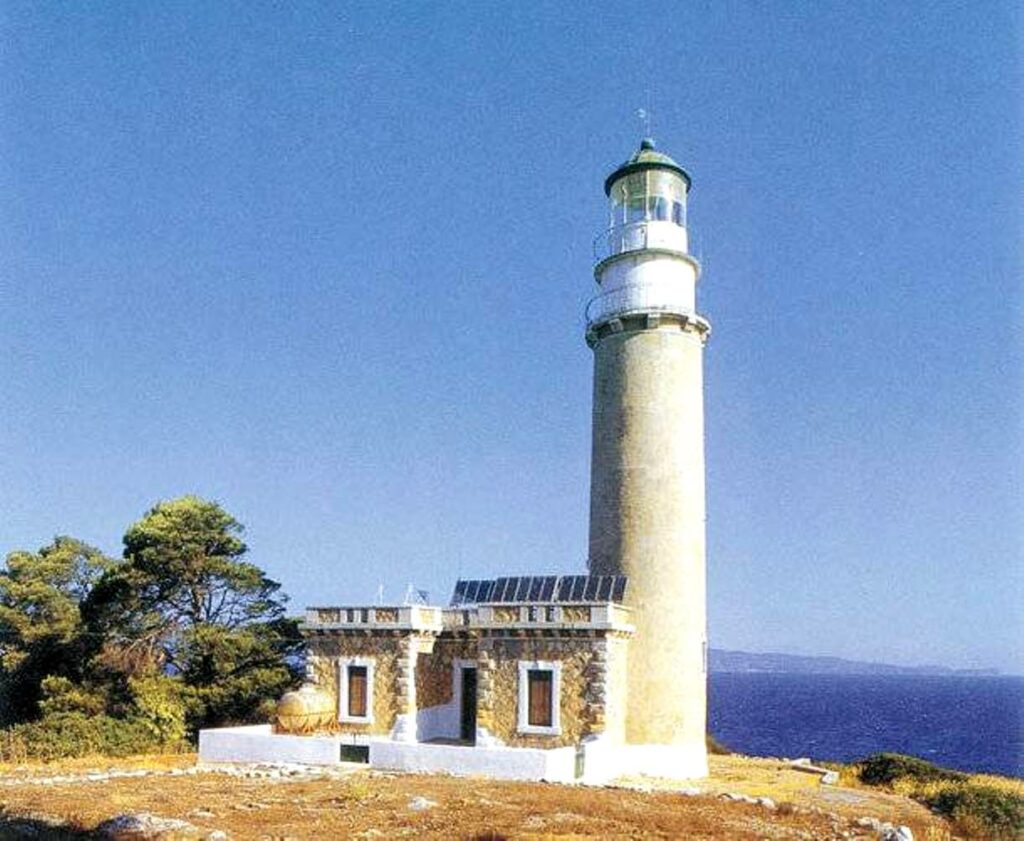
The lighthouse in Pontikonisi was built in 1907. It is located at the top of the islet of the same name, which is a rocky islet, deserted, bare and dry, one mile NE. of Cape Artemisio. The height of the circular tower of the lighthouse is 19 meters and it has a house for a lighthouse keeper. Its focal height from the sea surface is 62 meters, while it has illumination of 15n.m. for white and 12n.m. for the red sector. At a distance of 700 meters to the southeast is a much smaller rocky islet, Prasonisi. Also, near Pontikonisi there was another (third) island, named Myonisos by the ancients, which in the strong earthquake of 1758 sank and disappeared.
It is a first class lighthouse, one of the best in the Greek lighthouse network. It is the only mixed lighthouse that illuminates the channel in sections. One area shows safe crossing and displays solid white light, you have free navigation. It flashes with white light with a characteristic of 2 white flashes, when you go on the Lefteris reef, between Skiathos and Magnesia and with red light when you are heading to the shallows of Elena and the reefs of Skiathos. During World War II the lighthouse remained off, it reopened in 1944 with oil as a source of energy, as part of the reconstruction of the Greek Lighthouse Network. In 1982 the lighthouse was converted into a solar one and so operates since.
Despite the existence, since 1907, of an indirect lighthouse in the passage between Pelion and Skiathos, the ‘Lefteris’ reef caused many shipwrecks.
Thus, in 1915, while was passing the strait at night a French convoy, “the indirect marking”, ie the lighthouse in Pontikonisi extinguished, so one boat fell on Lefteris reef, while another, crossing on daylight, trying to avoid ‘Lefteris’, landed to the shallows of ‘Elena’, as the “indirect marking” is not enough during the day.
In the meantime, the years passed and the automatic acetylene lighthouses were discovered, so it was decided to build an automatic AGA lighthouse on Lefteris reef. On the same base that we find today the modern lighthouse. A simple, oxidized from the sea metal structure, supported on a concrete base, which has nothing to do with the impressive stone lighthouses. It is in the same place and for the same reason where it was erected in antiquity, to warn sailors!
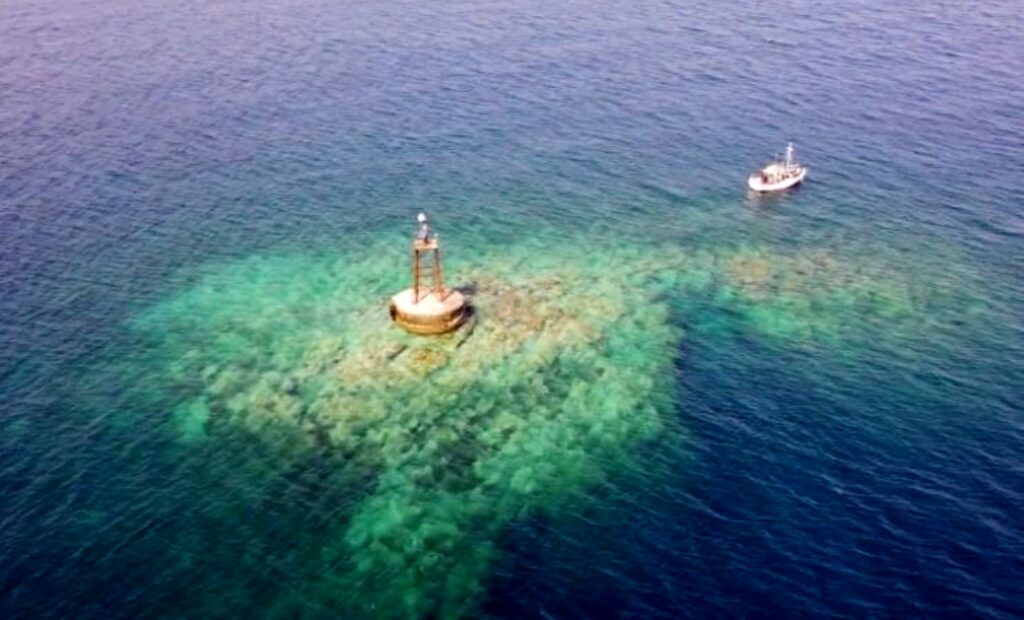
Xerxes’ ‘aleorio’
What does the ancient Greek word ‘aleorio’ mean? It means a construction, which indicates a shipping hazard (usually a reef). Its usefulness is limited only during the daylight, as it is not illuminated. They were usually white, so that they could stand out even in dim light or moonlight.
So when in 1919 the ship of the Greek Lighthouse Service, the boat “Pinios”, started the works for the construction of the lighthouse on the reef, it was found out that some others had preceded. On the sides of ‘Lefteris’ were found boulders shaped by human hand, the basis of a construction. No evidence has been found in the records showing that there had been an earlier attempt to make a lighthouse, either during Roman or Turkish rule. Lykoudis, the captain of ‘Pinios’, therefore began to search the ancient sources, geographers and historians, to find some relevant reference. And the search eventually led him to Herodotus. (Herodotus Musa, 7th Book, Polymnia, # 183).
The Persian fleet, seeking the conquest of Ancient Greece, during the failed second Persian invasion, was sailing along the shores of the Aegean, descended from Macedonia to the south. Of the ten ships that preceded the fleet as precursors, three of them crashed on the reef. The Persian king Xerxes ordered to be erected on the Myrminx reef (as it was then called ‘Lefteris’), an ‘aleorion’, ie a column of white carved boulders, to mark it and thus pass the rest of the ships safely. The aleorion may have helped the Persian fleet pass without further losses, but a few days later, as Herodotus (# 188) reports again, other historians as well, due to a severe storm which lasted three days, 400 of the Persian ships were destroyed in the bay and at Cape Sepiada, Pelion. As for the other ships that survived the storm, another disaster awaited them a few days later, just 10 miles further south. Many were sunk by the Athenians and the rest of the Greek fleet, in the naval battle of Artemisio, which took place simultaneously with the battle of Thermopylae. To complete the catastrophe a few months later, in September 480 BC. at the Battle of Salamis. This was the last attempt of the Persians to occupy Greece.
The danger of the reef, of course, did not cease to exist over the centuries, as the ‘aleorio’ was destroyed by storms and several shipwrecks occurred.
When in 1928 the Lighthouse boat “Pinios” went to maintain this time the lighthouse, which had been completed in 1920, Lykoudis sent divers to retrieve the stones of Xerxes. The divers removed 8 large boulders shaped with a scallop, weighing 700-1200 kg each. Their material was white dolomite, from the nearby Sipiada, where there are traces of an ancient quarry. And as the chronology was confirmed by Herodotus (480 BC), it was considered the oldest work (in Greece) on the safety of navigation, 2.5 centuries before the lighthouse (Faros) of Alexandria. The boulders of the aleorio today are located in the courtyard of the Naval Administration of Piraeus. The Municipality of Skiathos claims them to be set up on their island.

The above data comes from articles by Stylianos Lykoudis, published in 1948 in issues of the encyclopedia ‘ILIOS’. In a footnote, Lykoudis mentions that they are part of his first announcement (as an Academician) at the Academy of Athens, in 1928.
Lykoudis served in the Greek Royal Navy for 53 years, 8 months and 5 days, he was demobilized in 1941, when Greece surrendered to the Germans, with the rank of Rear Admiral, which makes him the longest-serving “officer” ever served in the Royal Navy. During his career he was director of the Lighthouse Committee of the Ministry of the Navy, a field with which he associated his name, even publishing a study entitled “History of the lighthouses on the Greek coast from antiquity to the present.” His name was given to the Lighthouse placing Ship PFA LYKOUDIS (A-481) one of the two ships that perform once a year, with predetermined voyages, from March to November, maintenance of all lighthouses (supervised and automatic) of the Greek seas.
The Construction of the lighthouse
The installation of a lighthouse in “Lefteris” was a “matter of honor” for the Directorate of Lighthouses, something that ‘was going to leave an era in the history of Mediterranean lighthouses’. But first it was necessary to build a concrete pedestal, which by the means of that time, was the most difficult part of the whole business.

The original technical study was conducted in 1916, but the events of World War I and the internal unrest with the National Divide, delayed its implementation. Thus we arrive in the summer of 1919, to begin work with the insertion of iron piles into the rock at the top of the reef. However, some failures slowed down the placement of the stakes, the ‘meltemi’ winds started, it was not possible to continue the project. It was found later that, because of the storms, the stakes with the iron angles “had bent to the rock”. So in early September the crews withdrew, postponing their efforts for the next year.
In order not to repeat the delays of 1919, the works started early, on 6/4/1920 with a floating crane – platform and an accompanying ship pounding on Lefteris. Everything went well and the installation of the pedestal was completed on 23/4/1920. Indeed, it was something unique and special, completely unprecedented, for the first time in the Greek lighthouse network, since the construction took place literally into the sea.
Dozens of articles have been published on the internet and in magazines, referring to the lighthouse on the ‘Lefteris’ reef, entitled ‘The oldest lighthouse in the world’. A catchy title, it raises traffic and likes. As we have seen above, it is a myth that does not apply. The only thing that is true is that the ‘Lefteris’ reef is a really dangerous reef, which is correctly marked with a lighthouse, but it does not meet the expectations of those who read those articles. As for the ‘ancient lighthouse’, as we have seen, it is an ‘aleorion’, of which in fact the surviving parts of today are elsewhere.

It is not known when Myrmix was renamed Lefkari and later ‘Lefteris’, however Alexandros Papadiamantis (1851-1911) a writer from Skiathos, wrote in 1891 in his novel ‘Poor Agios’, describing the steep coast below the Castle. ‘That coast, mysterious and dark, was considered awful for the honest seafarers; those whom, so to speak, Lefteris liberated from time to time, relieving the ships of their weight of the cargo, and the shipwrecked of their temporary burden of life.’
Shipwrecks
Many shipwrecks since then until today, even with signage, with lighthouses with radars. Think about what used to happen on old times…
During the last century, on 10-02-1999, the cargo ship “Vera” ran aground on the Lefteris reef, transporting rust, heading from Larymna, Fthiotida to Thessaloniki. The crew was collected and rescued. A few months later it broke in half and sank.
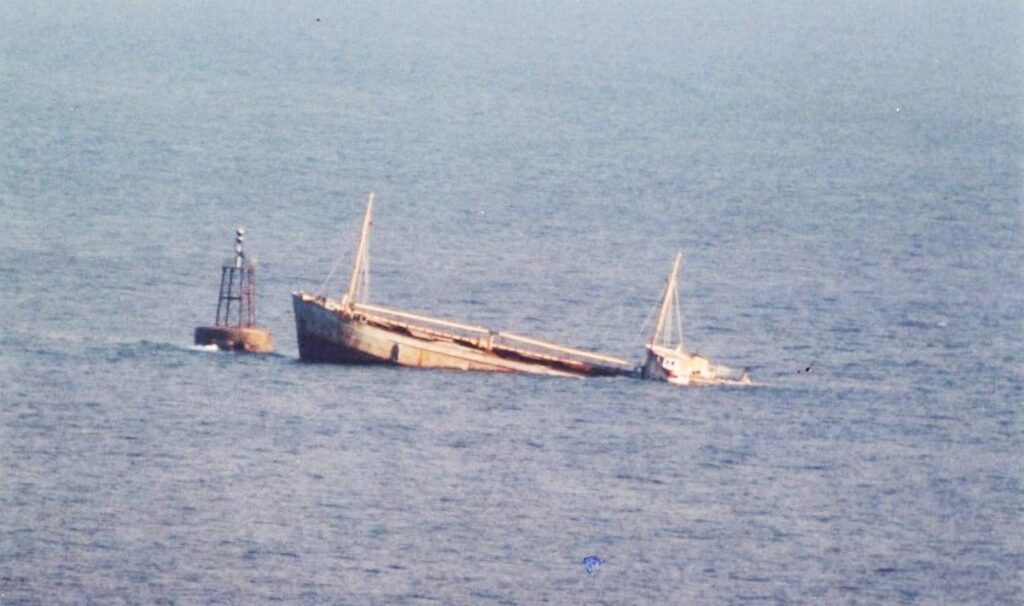

Today it is submerged at a depth of 17 to 28 meters. Its bow stands upright at the deepest point, while it’s stern, a little further away, rests on the seabed on the left side. Over the years it has become a natural refuge for marine life. This fact, combined with the mysterious atmosphere of the shipwreck and its ideal depth, creates the conditions for an unforgettable dive for divers of all levels.
A major shipwreck was the steamship “VOLOS”, which operated for years the route Hamburg-Istanbul. On February 21, 1931, at 8.14 in the evening, with bad weather, stormy sea and winds of 8 to 10 Beaufort, it was nearby the “Lefteris” reef. It has been 90 years since then and it is a story that is not known so well.
The wreck of S / S VOLOS.
Its original name was THASSOS. It was built in 1902 in Hamburg on behalf of the German Shipping DLL (Deutsche Levante Linie). It was a cargo steamer with a length of 85.6 and a width of 12.5 meters. However, with the outbreak of World War I, the ship was commanded. On August 4, 1914, joined the German Imperial Navy as a transport ship, with the insignia “G” (Munitionsschiff G). A few months later it was returned to its owners, fully functional, but ultimately failed to emerge unscathed from the war.
A year before the end of World War I, it suffered severe damage while anchored in the city of Luleο in northwestern Sweden. It was lifted and towed to Germany, but for the next 4 years it remained unrepaired. Finally, in 1921 it was bought by the German shipping company HAPAG. After it was repaired, renamed to VOLOS and in the summer of the same year, the steamer returned to active operation.
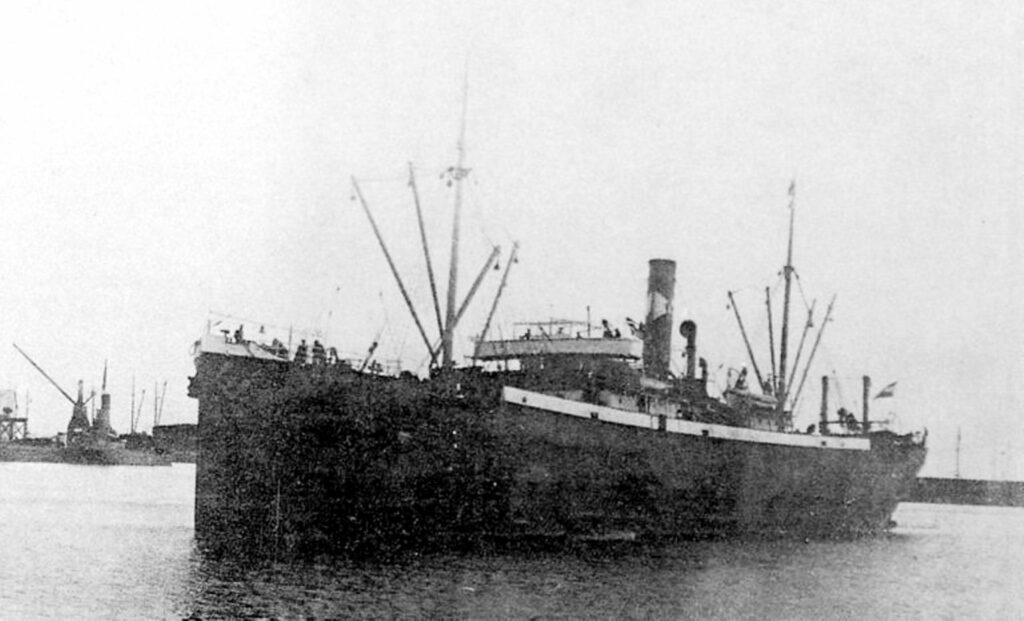
The famous “Lefteris”
On February 21, 1931, VOLOS was returning from Istanbul loaded with tobacco, resin and general cargo. The sea was stormy, as the winds reached 10 Beaufort. Shortly after 8 pm, when it was getting dark for good, the intensity of the storm took by surprise the captain, F. Pietsch, The ship was at the height of the famous “Lefteris” reef. This place, since antiquity, had gained the reputation of being a deadly danger to ships. At this ansient time it was called “Mirminx”, a small sunken rock ridge west of Skiathos.
The sinking of VOLOS
Despite his experience in the Greek seas, the captain could not cope with the severe sea turbulence. The German newspaper Hamburgischer Correspondent of April 3, 1931 described in details the last tragic moments of the steamship cargo ship:
At 20.05 he changed course to the left, in order to equalize, to manage the existing unusual sea current. The lighthouse of Lefteris could be seen far away, at a considerable distance on the left side of the ship. Suddenly the lighthouse looked brighter and the Officer spotted foaming waves breaking on the left side of the ship. For this reason he ordered the steering wheel to be turned immediately to the right. At 20.14 the ship ran aground with force and despite the immediate attempt to release it, putting on reverse, there was no result. With the constant blows of the waves and the stormy sea, it was pushed high up on the rocks.
Immediately after the grounding, news were received from the engine room, that the area was no longer sealed and that there was severe penetration of water. A little later came the announcement that in hull number three there was also penetration of water, which spread through the tunnel to the hull. The engine was then stopped and the crew was transferred to the deck. Lifebuoys were handed out and the two lifeboats were launched to the rails, but without being manned. The radio operator and the AD officer were constantly sending SOS signals, but there was no response, due to a short cut in the antenna. It was later found that the rig on which the antenna was mounted was broken. In the meantime, a strong wave lifted the ship so high that the crew could no longer hold on to their feet and began to fall. At 21.30 the generator stopped, so oil lamps had to be used. Around at 22.00 a steamer became visible, so the AD and BD officers started to send alarm signals with the steam-powered whistle of the ship. The incoming steamer was distinct for about an hour, when a second ship appeared and then began the attempt to send distress signals with the ship’s cannon, sparklers and the burning of chemicals. The two steamships passed without realizing anything. The ship was rocking and creaking from all sides, as it received huge amounts of water on deck and its superstructures. During the night the crew found refuge in the superstructure of the intermediate ship. On the morning of February 22, the officer placed an antenna on the forearm, through which the communication with the company’s representative in Thessaloniki was restored and a rescue ship was requested to be sent.
The abandonment of the ship
And the report continues: “In the morning the weather became better, so that there was no longer any danger to the crew. Shortly after the signal was sent, the Turkish lifeboat LA VALETTE arrived at the scene of the accident and stated that it agreed to provide assistance. The VOLOS was no longer shaking and was in a calm state. The hatches were opened and it was found out that all the internal, even the engine room and the boiler room, were full of water. At 13.40 the company’s agent from Thessaloniki announced that the rescue ship BELOS was on its way. On 17.12 a telegram was received from Hamburg, via Thessaloniki, informing that the steamer MEXICO located in Piraeus would be headed to the place of the stranded VOLOS. The next morning the rescue steamer BELOS arrived, whose diver made an assessment of the damage, according to which there was serious damage to the hull of the ship. The boiler and the engine had been cut off from their place and had been severely damaged. As it was no longer possible to save the ship, the next day the crew boarded the BELOS and were transported to the port of Volos, except for the captain, the officer and the engineer, who remained on the ship for three more days to avoid any attempt by third parties to loot or claim rescue rights, while the ship’s rescue operation was in progress.

On February 24, a large empty barge arrived at the scene of the accident, which moored by and on the 26th of the month, began the loading of naval instruments and other useful items in BELOS and the next day the transhipment of the cargo. After that VOLOS was abandoned to its fate, as it had completely turned into a shipwreck and had to be abandoned. VOLOS was insured for $ 45,000. During the interrogation, mentioned in this report and was confirmed, both the captain and the AD officer of the ship, both naval experienced in the Greek sea area, attributed the accident to a particularly strong sea current, which was not perceived at the right time. The state representative (Reichskommissar) accused the captain and the AD officer of the steamer VOLOS, that they did not do what was required, with due care and naval skill, otherwise the ship would not reach the point of grounding. In his opinion, the sighting of the lighthouse Lefteris was not done correctly and with the proper naval skill, while the sea current should be perceived in time. The Ministry of Shipping issued the following announcement: On February 21, 1931 the steamer VOLOS ran aground on the Lefteris rock in the Aegean Sea and was characterized as a total presumed loss. The accident is due to an unusual sea current, but with the correct naval handling, the grounding could have been avoided. “The actions taken after the accident were correct.”
Retrieving old shipwrecks to be sold as scrap metal was a common practice after World War II. Thus in the period 1945-1952, the Greek government pulled to dismantle at least 350 such old shipwrecks. Although “Volos” was not on such an official list, it did not avoid the insult of the partial lifting. The propeller, the superstructure and possibly the valuable engine and boiler were removed. Dynamites were often used to cut such huge pieces of metal despite the environmental damage they caused. So “Volos” is today a remnant of the wreck, but what remains is enough to attract divers to explore some fascinating historical events, a very interesting piece of local history.
Ioannis Karavas

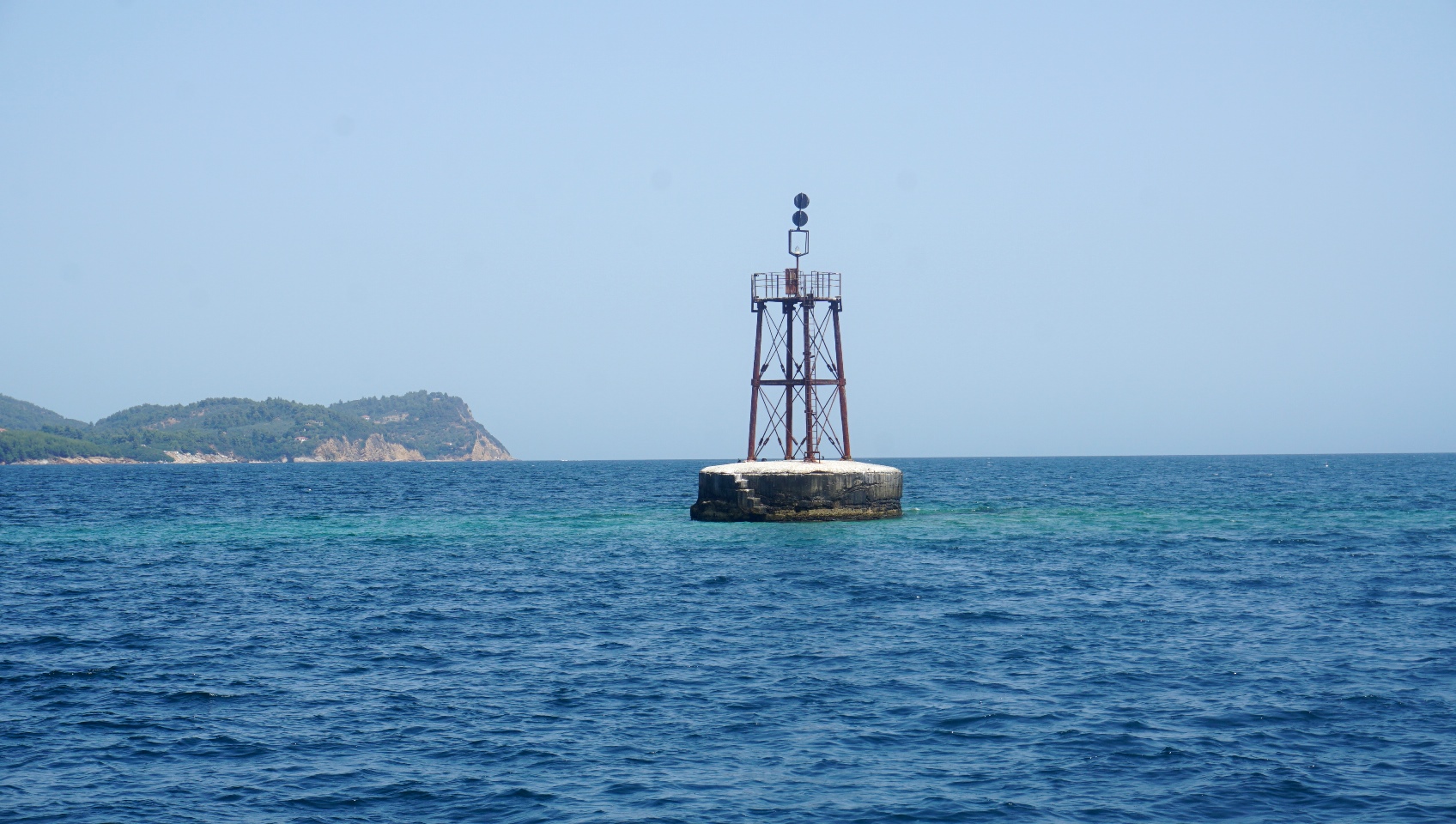
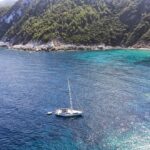


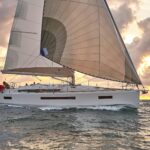
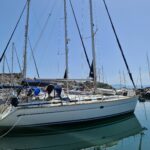
very good
Hello, the picture at the end is that of Vera
Dear Tassos, thank you for the information! When I have time I will make a notice. Best Regards!